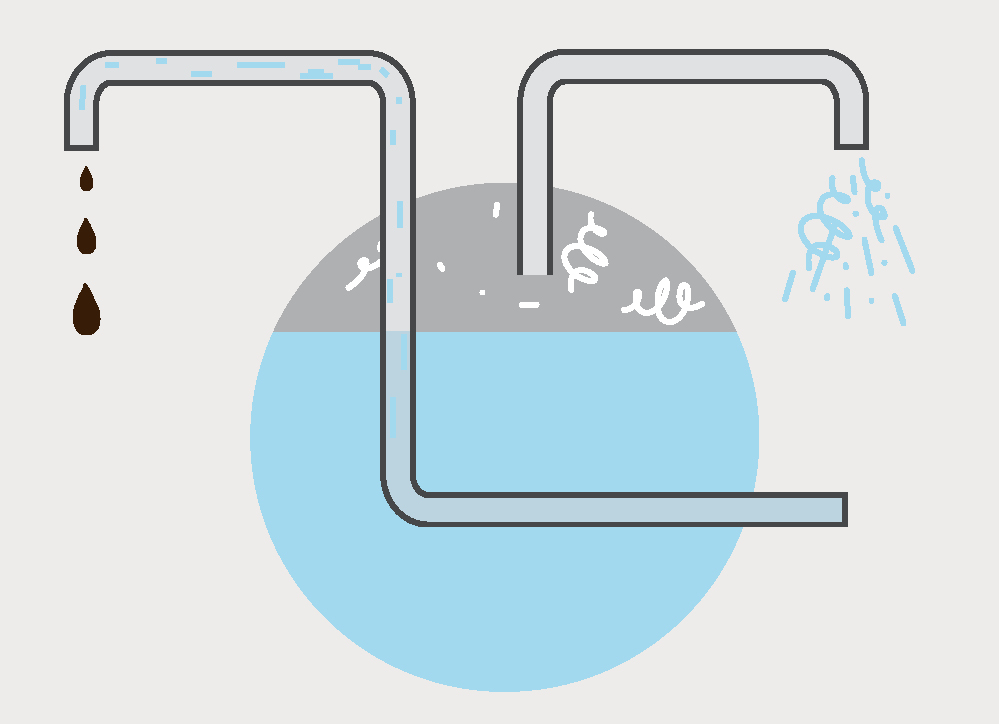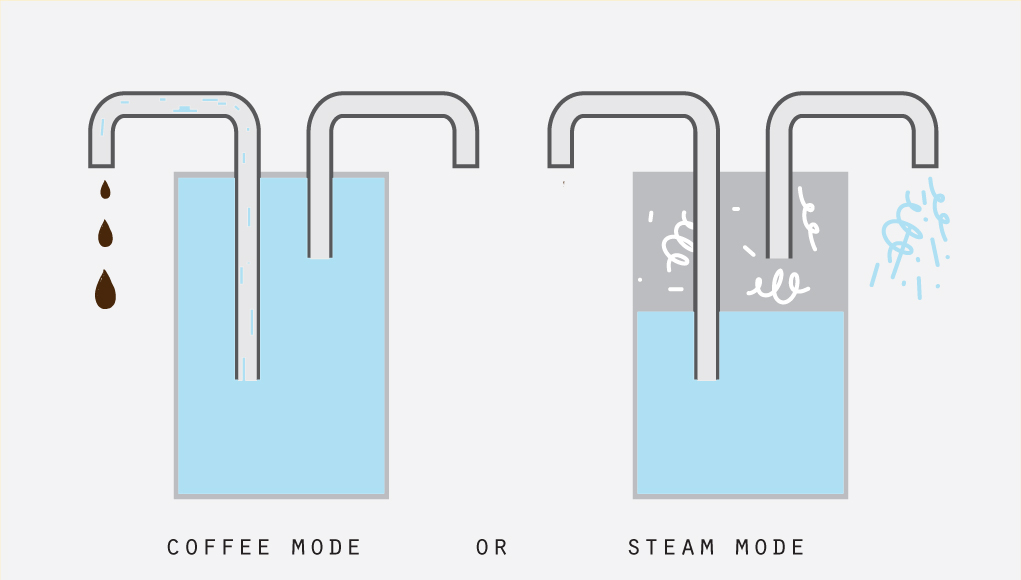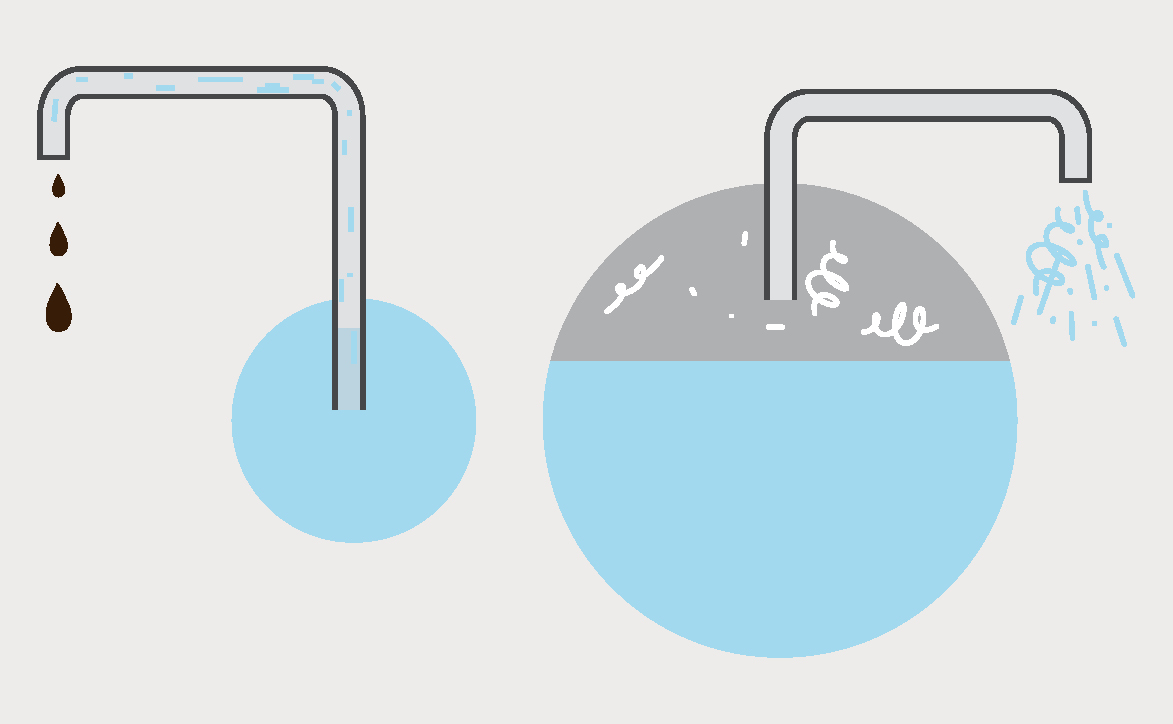 EXPERT
EXPERT
HOW TO MAINTAIN A STABLE TEMPERATURE
Espresso machines are fitted with one or two boilers to heat the water.
Boilers are categorized according to volume, and their job is to increase the temperature of the water. While nearly all boiler mechanisms use an electric element (nowadays, gas models are generally only used in countries that do not have a stable, effective public electrical network), there are various different techniques for obtaining both hot water and steam at the same time.

Heat exchanger
First used in 1961 on the FAEMA E 61, the heat exchanger works on the same principle as the bain-marie. A single boiler with a capacity of several pints is heated to 270°F to produce steam and heats the water entering via the heat exchanger, which is simply a thin, submerged tube. The heat exchanger receives cold water from the water reservoir or the water mains, and brings it to the right temperature for extracting the coffee drink from the grounds.

Single boiler
The system could not be simpler. In coffee mode, the boiler provides an ideal temperature of 198°F for making espresso. In steam mode, the temperature is increased by about 122°F in order to generate the steam to froth the milk for a cappuccino, for example.

Double boiler
This is the most advanced technology, first employed by La Marzocco in 1970. This works on the principle that you have one boiler dedicated to coffee brewing and the other to steam generation.
IN A NUTSHELL
FOR


TAKE NOTE
SINGLE BOILER
Domestic espresso machines
Well-designed technical solution, highly efficient in terms of extraction, with a stable temperature.
•Impossible to generate steam while brewing an espresso.
•You have to wait several minutes before you can produce steam, and wait for the water to cool down again afterward if you want to brew more coffees.
Opt for a brass boiler, rather than an aluminum one, with a capacity of at least 10 fl oz for optimum performance (best thermal inertia).
HEAT EXCHANGER
The majority of prosumer and professional machines
•Simultaneous coffee and steam functions.
•Its small capacity means the infusion water is constantly renewed.
•The temperature of the water heated in this way may vary by several degrees on exit from the group head.
•The extraction temperature is dependent on that of the steam boiler.
The heat exchanger’s small volume makes it vulnerable to limescale.
DOUBLE BOILER
The top-performing prosumer and professional machines
The fact that it has two independent boilers means you don’t have to settle for a compromise in terms of steam power versus extraction temperature (extremely stable).
The cost, as some parts are duplicated (boilers, heating elements, etc.).
The water in the coffee boiler is refreshed less frequently than in a heat exchanger, but this no longer poses a health issue thanks to improvements in the quality of public water and filtration systems.
